All About Watering Raspberries
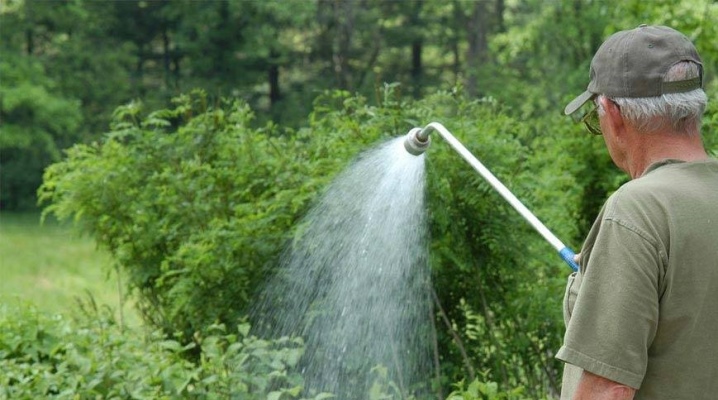
Raspberries are a very capricious crop, so gardeners have to make a lot of effort and time to get a rich harvest of this delicious berry. One of the conditions for proper plant care is proper watering; simple irrigation is not enough for raspberries. We will talk about all the features of watering in this review.
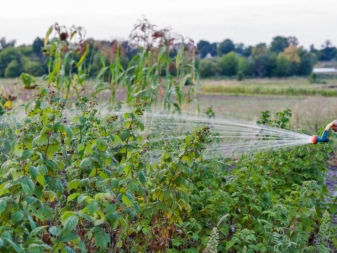
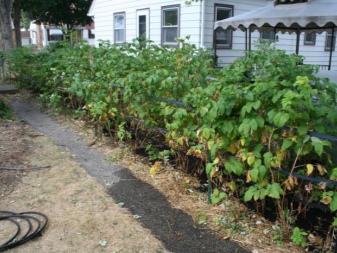
How often should you water?
The rules for watering raspberries are the same for all varieties and varieties of this garden plant. Moistening should be carried out if the soil has dried out by 5 cm or more. The fact is that the roots of this culture are practically under the soil surface, as the bush grows, they grow deeper into the ground. In this case, the growth rate directly depends on the moisture content of the substrate. That is why rare but abundant irrigation is preferable for this crop.
When determining the frequency of watering, the following factors are taken into account:
- grade - early or late ripening, remontant or common, drought resistance parameters;
- natural and climatic factors - the thickness of the snow cover in winter, the frequency of rains, the average daily temperature, the intensity and strength of the wind, the duration of the summer;
- the age of the bush - seedlings need much more moisture to adapt, gain energy and actively grow;
- current weather conditions.
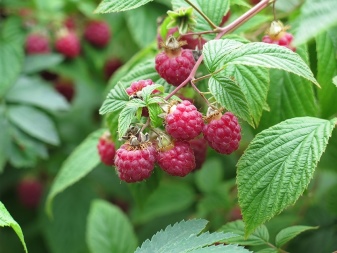
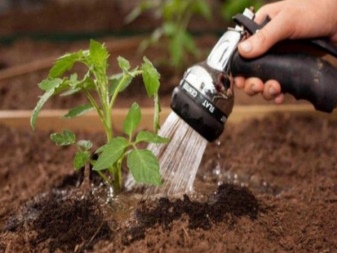
Important: it is best to process on cloudy days or in the evening. Watering in the heat is fraught with burns to shoots and leaves of the plant. The stream of water should be directed to the root to avoid wetting the leaves and stems - this prevents the development of fungal infections.
For one adult raspberry bush, you need to pour 10-15 liters of water. For each square meter of planting, about 40 liters should go. If it is impossible to regularly visit the site, the dose of moisture is increased by 20% - this is especially true for summer residents who come to their sites only on weekends. If you follow these recommendations, you can count on a rich berry harvest.
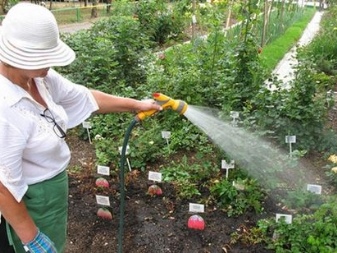
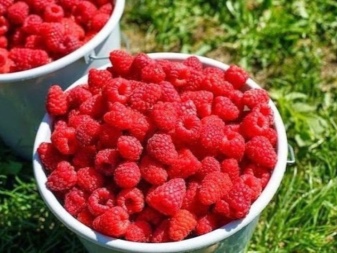
Water volume and temperature
Raspberries are sensitive to moisture. However, she does not like all water. The harsh acts especially negatively on her. It leads to the appearance of hard salts in the soil, which have the most unfavorable effect on the growth and development of crops. If there is a water supply on the site, the water must first be defended so that it becomes softer, or add special softeners.
Very often summer residents use water from a summer shower - it has an optimal degree of softness and a suitable temperature. The shrub responds very well to rain and melt water.
The temperature of the moisture for irrigating raspberries should not differ too much from the level of heating the air, since the rhizomes of raspberries react quite sharply to any temperature fluctuations. In spring, cool water is suitable for the culture - this is how the plant is tempered. At the same time, the use of ice-cold liquid is not recommended. In summer, it is better to water the raspberries warm, usually summer residents take water from the tank - the sun heats it up in a day, but as it passes through the hose it cools down a little.
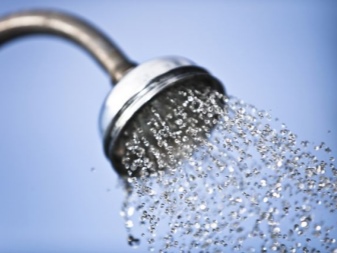
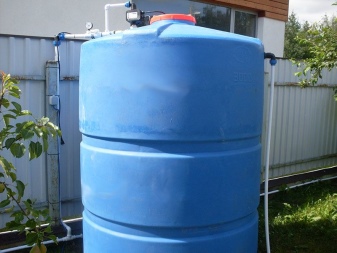
The ways
Moisturizing raspberry plantings can be done in different ways. In most cases, gardeners use watering from a hose, watering can or buckets directly at the root. It is more rational to water large plantings using automated installations - drip and rain. In this case, care must be taken to ensure that the water source is located near the irrigated areas.
Most often, summer residents use a nearby lake or pond, a well or a well near the site.
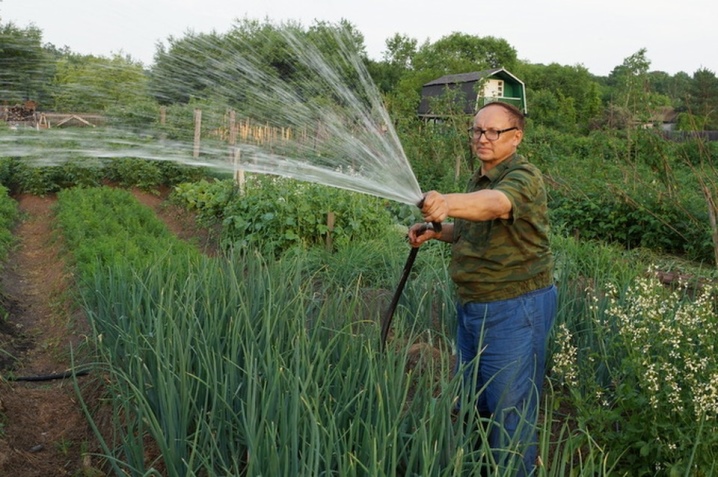
Several techniques are used for watering plants, all of them, with the right approach, give a good result.
Basal
The most common method. Ideal for small areas. In this case, watering is done by applying water directly to the base of the plant stems. For this, gardeners use buckets, watering cans or hoses without a nozzle. The irrigation rate is 10-15 liters for one adult plant.
This method allows you to control the amount of irrigation, but is laborious.

Along furrows
When irrigating large cultivated areas on both sides of the beds at a distance of 40-60 cm, trenches with a depth of 10-20 cm are formed. Irrigation water is started through them until the entire required volume is selected. The pressure force must be weak, otherwise the liquid will begin to pour out over the edges of the recesses, and this can lead to waterlogging of the soil. After the end of irrigation, the grooves are sprinkled with earth, and the substrate near the bushes is loosened.
The main advantage of the method is that moisture does not get on the green parts of the plant. The disadvantage is associated with the inability to control the amount of incoming water, therefore there is always a risk of under- or over-wetting.
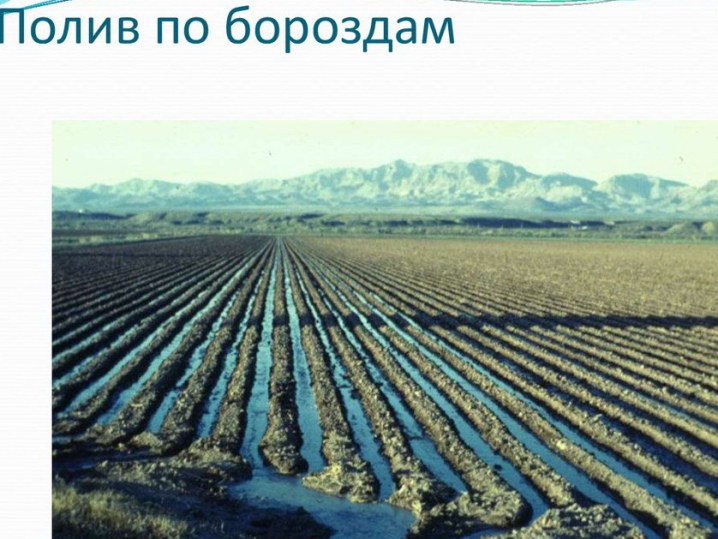
Sprinkling
In this case, irrigation water is sprayed in the form of rain drops over raspberry bushes, as well as on the soil surface. To do this, use a hose with spray nozzles or specialized sprinkler systems. Such installations attract with their mobility, they can be freely moved to any place in the garden area. The structures consist of several collapsible modules, their nozzles sprinkle water at 6-8 m. Alternatively, you can use centrifugal nozzles, they spray moisture along the diameter.
The use of sprinkling contributes to economical water consumption, but at the same time, it can lead to waterlogging of plants.

Drip
Drip wetting involves supplying liquid directly to the raspberry roots. This method is considered to be as accurate and easy to use as possible. With the help of a pump, moisture from the source goes into the system and is already supplied to the bushes through hoses.
The advantages of such a system are the ability to regulate the volume and pressure of the water supply. Moisture is supplied in a metered dose to the necessary points directly to the roots of the plant. At the same time, the row spacings remain completely dry. This significantly reduces the risk of waterlogging of the soil, and makes water consumption as economical as possible.
The only drawback of this method is its dependence on electrical energy.
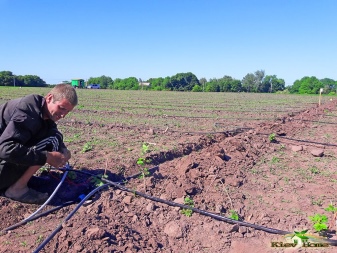
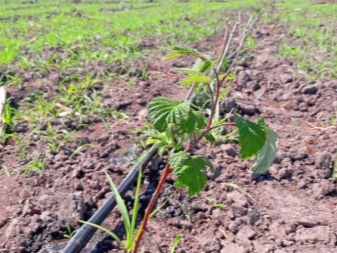
Basic rules for watering
There are several basic rules for irrigating raspberry bushes, which are the same, regardless of the variety and stages of plant development. When caring for this crop, it is very important to stick to them. Only in this case will the shoots be healthy, and the berries large, sweet and juicy.
Let us dwell a little more on the features of raspberry hydration, depending on the season.
Summer
In summer, irrigation of raspberries should be carried out with the utmost care, since this period accounts for flowering, berry setting and fruiting. Gardeners should adhere to the recommendations of the experts.
Watering the bushes should be at the base of the stem at the root. Otherwise, the water jet may damage the flowers. It is necessary to irrigate only when the earth dries up by 4-5 cm.
At the stage of flowering and the appearance of ovaries, it is advisable to introduce mineral fertilizers into the water; you can buy suitable fertilizers in any specialized store. It is best to use formulations with magnesium, phosphorus and potassium - these substances are required in a large volume of raspberries, they stimulate the accelerated growth of fruits, increase the quality and quantity of the crop.
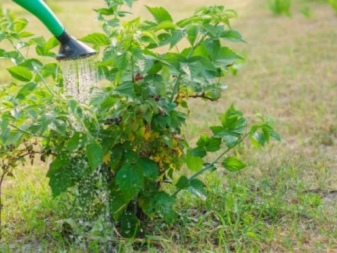

Raspberries do not like waterlogging, but the soil should not be allowed to dry out either. In conditions of water shortage, the fruits grow sour and small. That is why it is very important to keep the soil condition under control during the hot season.
Tip: in order to comply with agricultural practices, it is necessary to collect information about the varietal characteristics of raspberries. Some varieties do not even tolerate mild drought. Others - painlessly withstand short-term drought and watering once a week.
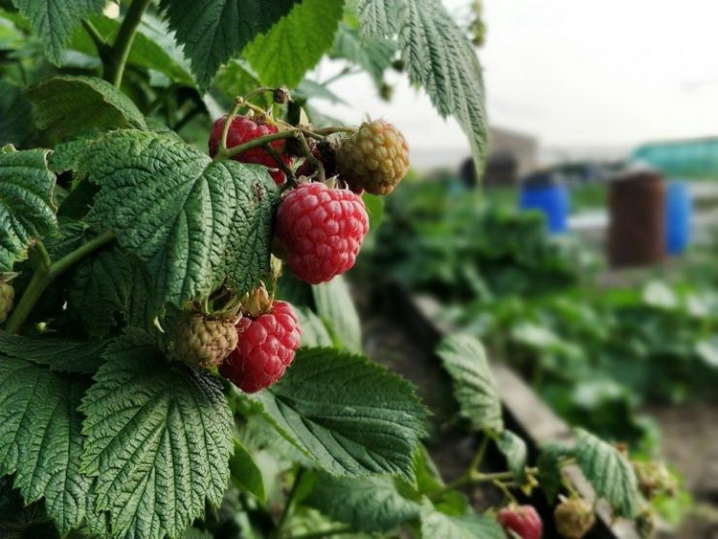
In the spring
In the springtime, raspberries wake up. At this stage, she needs as much moisture as possible so that the plant can move to the stage of active growth. After the snow melts, the soil must be disinfected with Bordeaux liquid or copper sulfate solution - such treatment will destroy insect pests and fungal spores wintering in the substrate. After that, watering is carried out according to the following scheme:
- the first moistening should be done immediately after disinfection of the earth using organic fertilizing;
- the second and subsequent treatments are carried out as the substrate dries up.
If the ground remains moist for a long time after the snow cover has melted, it should not be watered until it begins to dry out. However, at this time, you need to fertilize with liquid fertilizers. This will allow the raspberry bush to receive the required amount of mineral and organic nutrients immediately upon awakening.

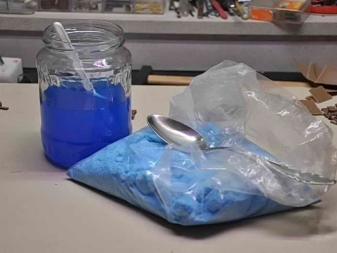
In autumn
With the onset of autumn, the plants are preparing for winter sleep, so the last watering should be done no later than 2-3 weeks before frost. This should be done only if the soil is dry. The bush is watered with a small amount of water, the standard rate is reduced by 3-5 liters. After applying the organic fertilizers necessary for the wintering of the plant to the soil, irrigation should be stopped.
The root system takes time to prepare for the cold winter. With the onset of the first frosts, it should be dormant, so autumn watering should be minimal.
If you do not reduce the amount of incoming fluid, then the garden culture will not be able to prepare for a sharp drop in temperature. She will continue to give young leaves and form shoots, and after the arrival of frost, such a plant will inevitably die.
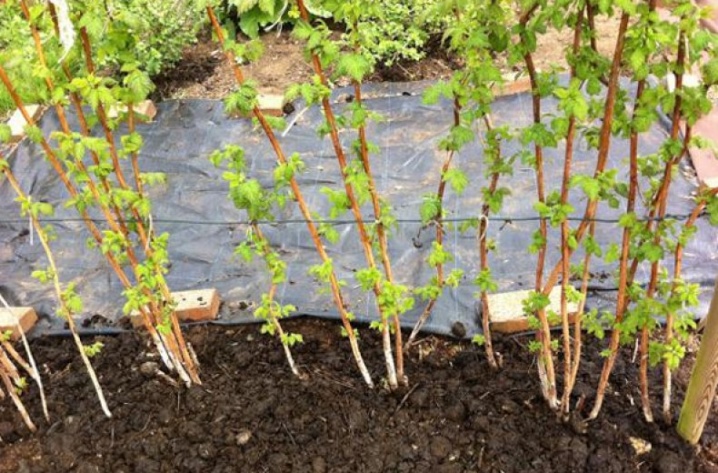
There are some peculiarities when watering remontant raspberries. This plant bears fruit several times per season and produces berries until the first snow. The roots of such a plant require intensive air exchange. However, an excessively humid land causes an oxygen deficiency; for such soils, the optimal moisture content is considered to be 60-80% of the minimum moisture capacity.
Such a crop experiences the maximum need for moisture before flowering, and then during the period of growth and ripening of fruits. The plants are irrigated in such a way that the substrate is saturated with water to a depth of 25-40 cm. In hot dry weather, the intensity of irrigation and its frequency can be increased: it is important that the soil always remains slightly moistened.
To prevent the substrate from drying out, use a drip technique to irrigate remontant raspberries.
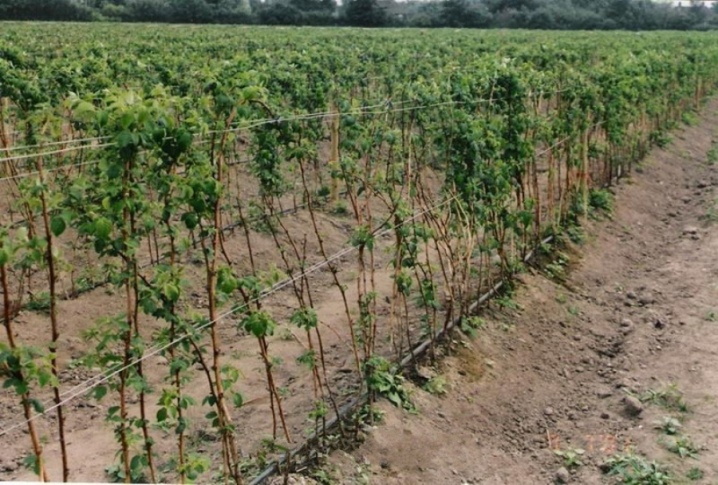
Novice gardeners often wonder how watering raspberry bushes can affect crop yield, whether the bushes should be irrigated during the ripening of berries, and whether it is possible to combine moisture with top dressing. Therefore, in conclusion, we present the recommendations of experienced gardeners.
- Moisture deficiency is very easy to determine by the state of young raspberry shoots. If they are thin, shortened and bend easily, then the plant needs water.
- Fertilization must be combined with watering, because any fertilizing should be done exclusively in moist soil. If fertilizer comes into contact with dry roots, there is a high risk of burns.
- Sprinkler irrigation can be done only early in the morning, in the evening, or in cloudy weather, when the plant is not exposed to direct sunlight.
- Best of all, water enters the root system with the trench irrigation method along the grooves.
- To eliminate the larvae of insect pests, raspberry shoots are treated with boiling water, spraying at a distance of 1 m. This procedure is carried out in early spring.
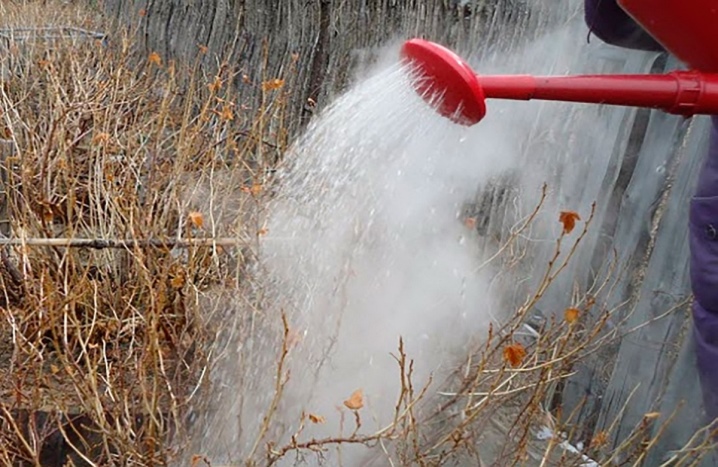
Watering is required for bushes of garden raspberries in the open field during the entire growing season. This plant needs moisture before the buds appear, at the flowering stage, at the stage of ovary formation and in the process of fruit ripening. The frequency and intensity of irrigation, as well as the volume of water, are determined taking into account climatic and natural factors.
The correct choice of irrigation technique and the timely introduction of water in the right amount become the key to the appearance of a rich harvest of sweet, aromatic and juicy berries.
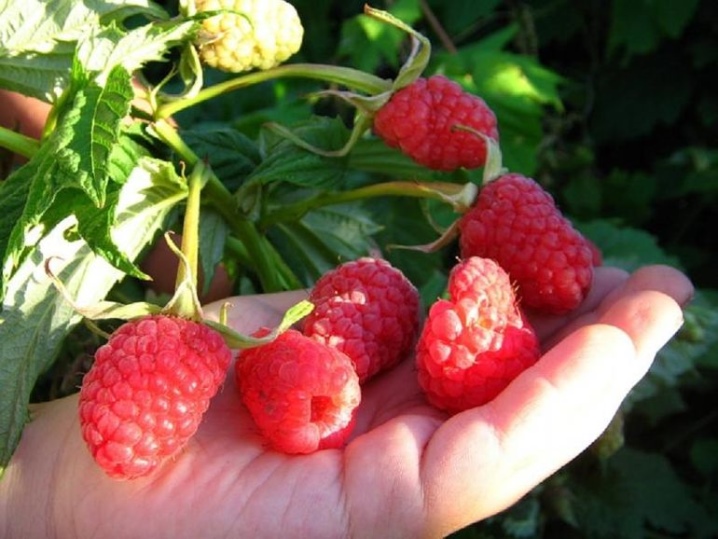





The comment was sent successfully.